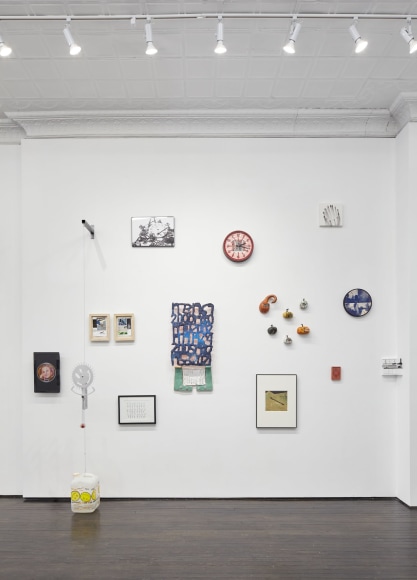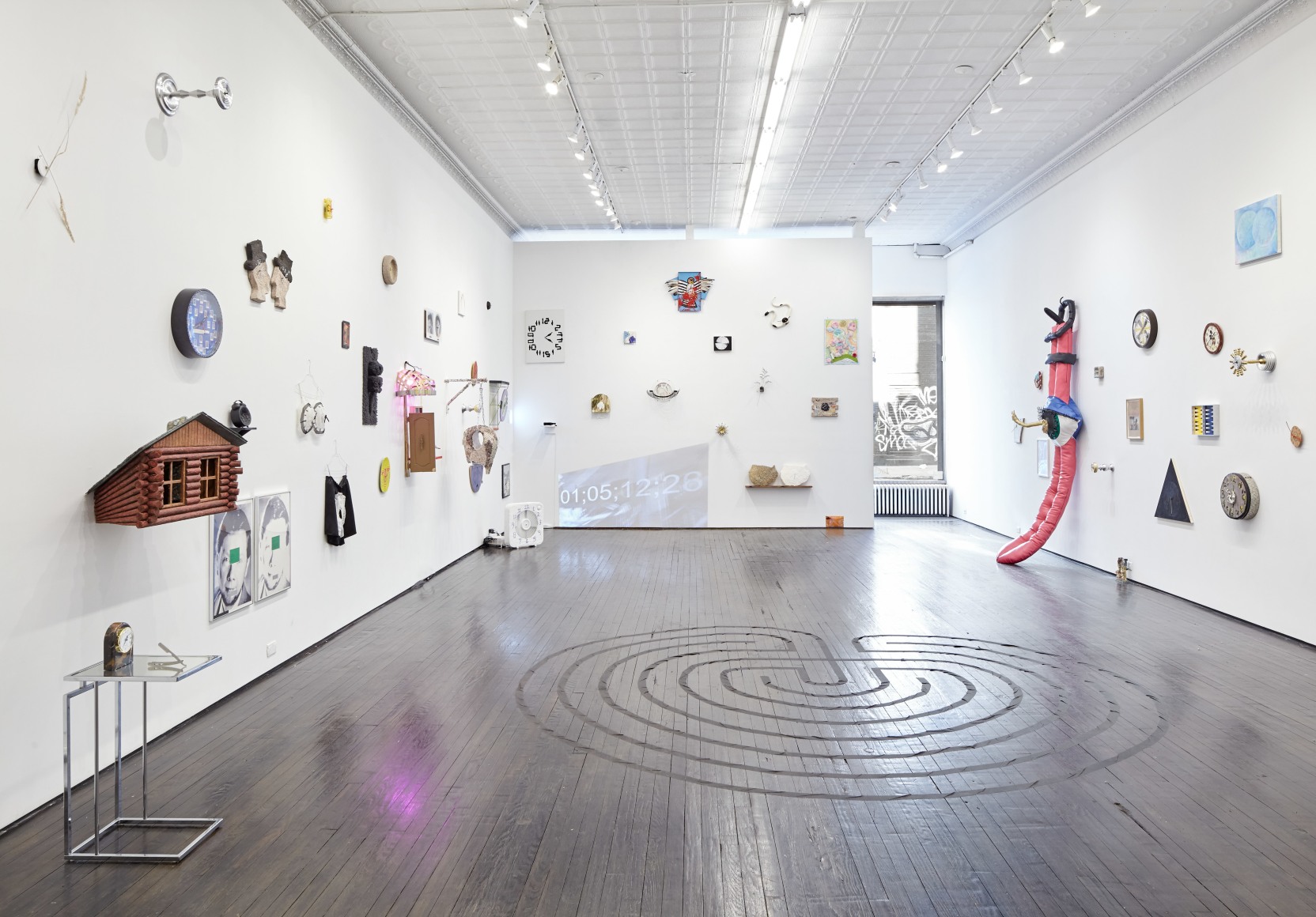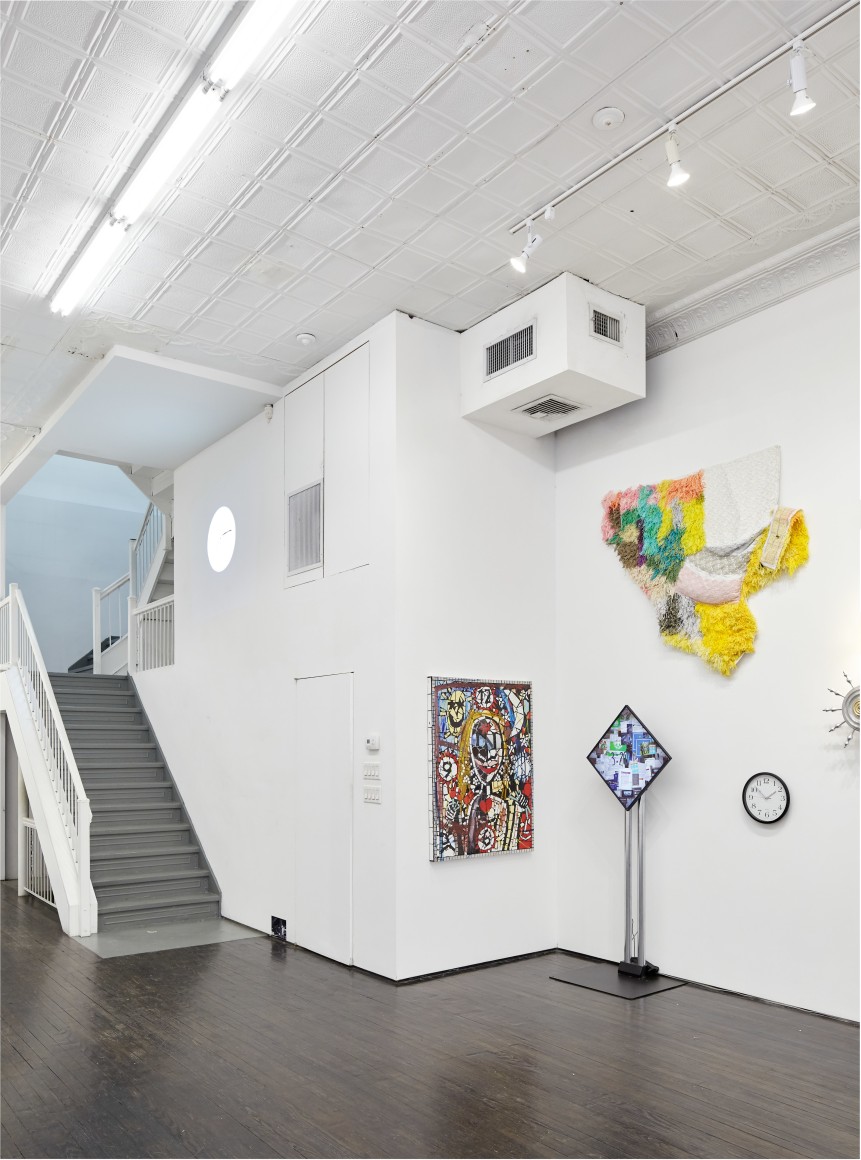Jack Hanley Gallery is excited to present Horology, a group exhibition themed around the ubiquitous device to visualize time, the clock.
The clock is a human-made tool to measure intervals of time shorter than the natural units: the day, the lunar month, the seasons, the year. Commonly marked in increments of one second, five minutes, one and twelve hours, the clock visualizes both the perpetual advancement and cyclical nature of time.
The hands of the clock move only forward as time advances through a series of present moments. With each tick, time stammers towards a human-made idea of the future, leaving the past as a memory in its wake.
Simultaneously, the hands of the clock move in a circular repeating motion, fixed by a center. This motion echoes the planets rotating around the sun, manifesting days, nights, and longer seasonal shifts. Because there is a natural cycle, we can predict the relative future with accuracy, and find unmistakable patterns throughout past personal and collective histories.
The standardization—or rather, industrialization—of time started in 1884 with the International Meridian Conference to create a supposed facility between nations. The world was divided into 24 time zones with a politically chosen “base time” in Greenwich, UK. Coordinated Universal Time (UTC) is now synchronized around the world at midnight by means of GPS between government protected “Master Clocks” whose precision is based on the radiation given off by a cesium-133 atom. Before that, time was set in each municipality of the clock-using world by the daily local position of the sun at noon. With standardization, humans became in-synch with each other, and divorced from the natural world and our natural rhythms. “Noon” is now blocked into segments radiating out from colonial political powers, no longer the sun directly above your head.
The opening will also launch Anthology of Time, a reader co-published by Peradam Press and Jack Hanley Gallery, including additional contributions by Candystore, Ashton Cooper, Chrissie Iles, Silke Lindner-Sutti, John Arthur Peetz, Vanessa Gully Santiago, Gedi Sibony, Amelia Stein, and Clemence White.
Kerri Ammirata
Alex Ayed
Davide Balula
Emma Barnett & Peggy Barnett
Brian Belott
Meriem Bennani
Phil Birch
Sarah Braman
Nicholas Buffon
Chen Chen & Kai Williams
Sam Chun
Cobra
Paul Créange
Nick DeMarco
Raque Ford
Sara French
Jashin Friedrich
Myranda Gillies
Jesse Greenberg
Tyree Guyton
S*an D. Henry-Smith
Dan Herschlein
Madeline Hollander
Liz Hopkins
Meredith James
Jenna Kaës
Elizabeth Karp-Evans
Sahar Khoury
David Kirshoff
Zak Kitnick
Aidan Koch
Hein Koh
Emma Kohlmann
Dylan Krauss
Ajay Kurian
Keith Lafuente
Jack Lawler
Maia Ruth Lee
Bonnie Lucas
Mary Manning
Pat McCarthy
Tavi Meraud
Eamon Monaghan
Harry Moritz
Devin N Morris
Isaac Nichols
Kayode Ojo
Nikholis Planck
Kaitlin Pomerantz
Carlos Reyes
Betty Roytburd
Bennet Schlesinger
Anna Sedlock-Reiner
Mimi Smith
Zach Steinman
Will Stewart
RJ Supa
Linnea Vedder
Siebren Versteeg
Cameron Welch
Jeff Williams
Coco Young
Sarah Zapata







